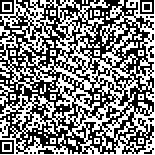| 摘要: |
| [摘要] 目的 分析下胫腓螺钉固定技术治疗Maisonneuve骨折的疗效。方法 回顾性分析2014-10~2018-11深圳市人民医院骨关节科收治的21例Maisonneuve骨折患者的临床资料。术前均完善患侧踝关节和胫腓骨全长X线片、踝关节CT三维重建以及踝关节MRI检查。合并三角韧带损伤者14例,内踝骨折者7例,下胫腓后韧带损伤者15例,后踝骨折者6例。手术均采用2枚皮质骨位置螺钉固定下胫腓关节,予2枚螺钉固定内踝骨折以及累及关节面超过25%面积的后踝骨折,术后予短腿石膏固定踝关节4周,术后12周手术将下胫腓螺钉取出。术后门诊随访12~29个月,平均18.31个月,定期复查X线片。于术前和术后行视觉模拟评分法(VAS)评分和美国足踝外科协会(AOFAS)踝-后足评分,评价治疗效果。结果 术后踝关节均获得解剖复位,关节匹配正常,未发生切口感染、下胫腓螺钉断裂等并发症。定期复查X线片见骨折均骨性愈合,踝关节匹配关系正常,未出现复位丢失。术后患者VAS评分呈下降趋势,AOFAS踝-后足评分呈上升趋势,疼痛缓解及足踝活动功能改善显著(P<0.05)。结论 下胫腓螺钉固定技术治疗Maisonneuve骨折能够恢复踝关节的正常解剖关系,疗效满意。 |
| 关键词: Maisonneuve骨折 踝关节 腓骨 外科手术 |
| DOI:10.3969/j.issn.1674-3806.2020.12.07 |
| 分类号:R 683.42 |
| 基金项目:国家自然科学基金青年项目(编号:81902196);深圳市科技计划面上项目(编号:JCYJ20190806160014794) |
|
| Analysis of therapeutic effect of syndesmotic screw fixation on treatment of Maisonneuve fracture |
|
REN Jin-ke, XIAO Ting-hui, JIA Zhao-feng, et al.
|
|
Department of Osteoarthropathy, Shenzhen People′s Hospital(the Second Clinical Medical College of Jinan University, the First Affiliated Hospital of Southern University of Science and Technology), Guangdong 518020, China
|
| Abstract: |
| [Abstract] Objective To investigate the therapeutic effect of syndesmotic screw fixation on treatment of Maisonneuve fracture. Methods The clinical data of 21 patients with Maisonneuve fracture admitted to the Department of Osteoarthropathy, Shenzhen People′s Hospital from October 2014 to November 2018 were retrospectively analyzed. Before operation, X-ray films of the affected ankle and the full-length tibiofibula, computed tomography(CT) three dimensional reconstruction of the ankle joint and magnetic resonance imaging of the ankle joint were completely examined. There were 14 cases of deltoid ligament injury, 7 cases of medial malleolus fracture, 15 cases of posterior inferior tibiofibular ligament injure and 6 cases of posterior malleolus fractures. Two cortical bone screws were used to fix the lower tibiofibular joint. The medial malleolus fractures and posterior malleolus fractures involving more than 25% of the articular surface were treated with 2 screws to fix the fracture block. The ankle joint was fixed with short leg cast for 4 weeks after operation. After 12 weeks, the lower tibiofibular screw was removed. Postoperative outpatient follow-up was conducted for 12 to 29 months, with an average of 18.31 months. X-ray films were regularly reviewed. Visual Analogue Scale(VAS) score and American Orthopaedic Foot & Ankle Society(AOFAS) ankle-hindfoot score were performed before and after surgery to evaluate the treatment effects. Results The anatomic reposition of ankle joints was achieved after operation. The joint matching was normal, and no complications such as incision infection and fracture of lower tibiofibular screw occurred. Regular reexamination of X-ray showed fracture healing. The ankle joint matching relationship was normal, and no reduction loss occurred. The patients′ VAS scores showed a downward trend after operation, and the AOFAS ankle-hindfoot scores showed an upward trend. Pain relief and ankle movement function improved significantly(P<0.05). Conclusion The treatment of Maisonneuve fracture with tibiofibular screw fixation can restore the normal anatomic relationship of the ankle joints with satisfactory results. |
| Key words: Maisonneuve fracture Ankle Fibula Surgery |

